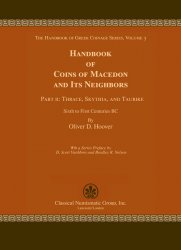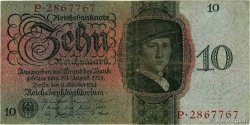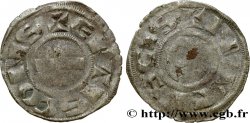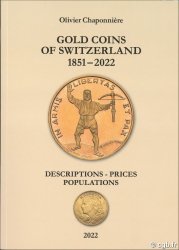lh42 - The Handbook of Greek Coinage Series, volume 10 - The Handbook of Coins of the Southern Levant (phoenicia, Southern Koile Syria (including Judaea), and Arabia, Fith to First century BC HOOVER O. D.
65.00 €(Approx. 73.45$ | 55.90£)
Quantity
Add to your cart

Author : HOOVER O. D.
Publisher : CNG
Language : anglais
Description : Lancaster, 2010, relié cartonné, (14 x 22,3 cm), 271 p. ill. n&b (photographies), vol. 10
Weight : 570 g.
Commentary
More than three decades have passed since David Sear published Greek Coins & Their Values, his revision of Gilbert Askew’s A Catalogue of Greek Coins published by B. A. Seaby in 1951. Since then, the field of ancient numismatics and the hobby of collecting ancient coins have changed so much that now Greek Coins & Their Values would require a complete revision to include all of the most current numismatic information available, list the many new types and varieties unknown to Sear, and determine an approximate sense of rarity for all of these issues. In order to encompass this new material and create a viable reference for the beginning and specialized collector, such a handbook would have to be more than the two volumes which Sear found necessary. As a result, Classical Numismatic Group is publishing The Handbook of Greek Coinage Series, written by Oliver D. Hoover, consists of a series of 13 volumes, each covering a specified area of Greek coinage. The first published volume was the Handbook of Syrian Coins: Royal and Civic Issues, Fourth to First Centuries BC (Volume 9 in the series - published in 2009). Now available is the next published volume in the series, Handbook of Coins of the Southern Levant: Phoenicia, Southern Koile Syria (Including Judaea), and Arabia, Fifth to First Centuries BC (Volume 10 in the series). Like the preceeding volume, the Handbook of Coins of the Southern Levant: Phoenicia, Southern Koile Syria (Including Judaea), and Arabia, Fifth to First Centuries BC is designed to aid the user in the quick, accurate, and relatively painless identification of Greek coins from the region it covers, while providing a cross-reference for each entry to a major work, which will allow the inquirer to pursue more in-depth research on the subject.
The Handbook of Coins of the Southern Levant: Phoenicia, Southern Koile Syria (Including Judaea), and Arabia, Fifth to First Centuries BC is arranged geographically from north to south with each region's city entries in alphabetical order. The coinage within each city is arranged chronologically and begin with the royal issues during the Persian Empire (as is the case with the cities of Phoenicia), through the issues of Alexander the Great (both lifetime issues and those later civic issues in his name). Where rulers or cities issued coins concurrently in all three metals, these issues will be arranged in the catalog with gold first, followed by silver, and then bronze; each metal is arranged by denomination, largest to smallest. Each entry will include a rarity rating based on the frequency with which they appear in publications, public and private collections, the market, and/or are estimated to exist in public or private hands. No valuations are listed in this volume either, since such values are generally out of date by the time of publication. The online valuation guide at www.greekcoinvalues.com will allow interested individuals the opportunity to gauge the market, and reduce the need for repeated updates of this series. Whether one purchases the entire set for their reference library, or the individual volume pertaining to one’s area of specialization, The Handbook of Greek Coinage Series should provide a useful staging-point from which collectors and interested scholars can pursue their research and interests..
The Handbook of Coins of the Southern Levant: Phoenicia, Southern Koile Syria (Including Judaea), and Arabia, Fifth to First Centuries BC is arranged geographically from north to south with each region's city entries in alphabetical order. The coinage within each city is arranged chronologically and begin with the royal issues during the Persian Empire (as is the case with the cities of Phoenicia), through the issues of Alexander the Great (both lifetime issues and those later civic issues in his name). Where rulers or cities issued coins concurrently in all three metals, these issues will be arranged in the catalog with gold first, followed by silver, and then bronze; each metal is arranged by denomination, largest to smallest. Each entry will include a rarity rating based on the frequency with which they appear in publications, public and private collections, the market, and/or are estimated to exist in public or private hands. No valuations are listed in this volume either, since such values are generally out of date by the time of publication. The online valuation guide at www.greekcoinvalues.com will allow interested individuals the opportunity to gauge the market, and reduce the need for repeated updates of this series. Whether one purchases the entire set for their reference library, or the individual volume pertaining to one’s area of specialization, The Handbook of Greek Coinage Series should provide a useful staging-point from which collectors and interested scholars can pursue their research and interests..







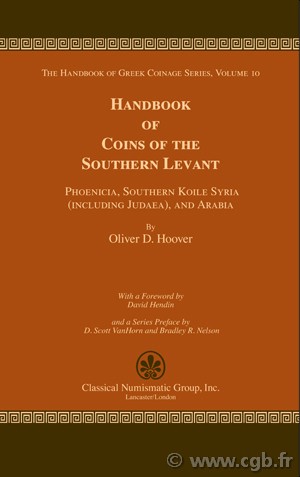
 Report a mistake
Report a mistake Print the page
Print the page Share my selection
Share my selection Ask a question
Ask a question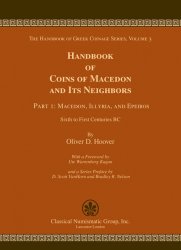
 Full data
Full data